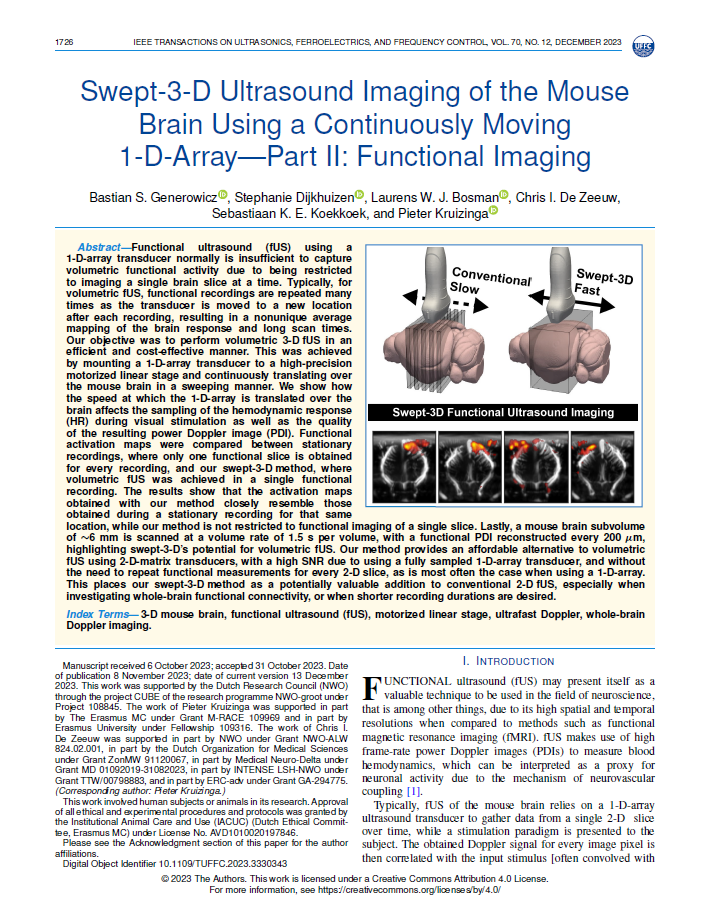Scientific Publications
DBI2 publications
Swept-3-D Ultrasound Imaging of the Mouse Brain Using a Continuously Moving 1-D-Array—Part II: Functional Imaging
Functional ultrasound (fUS) using a 1-D-array transducer normally is insufficient to capture volumetric functional activity due to being restricted to imaging a single brain slice at a time. Typically, for volumetric fUS, functional recordings are repeated many times as the transducer is moved to a new location after each recording, resulting in a nonunique average mapping of the brain response and long scan times. Our objective was to perform volumetric 3-D fUS in an efficient and cost-effective manner. This was achieved by mounting a 1-D-array transducer to a high-precision motorized linear stage and continuously translating over the mouse brain in a sweeping manner. We show how the speed at which the 1-D-array is translated over the brain affects the sampling of the hemodynamic response (HR) during visual stimulation as well as the quality of the resulting power Doppler image (PDI). Functional activation maps were compared between stationary recordings, where only one functional slice is obtained for every recording, and our swept-3-D method, where volumetric fUS was achieved in a single functional recording. The results show that the activation maps obtained with our method closely resemble those obtained during a stationary recording for that same location, while our method is not restricted to functional imaging of a single slice. Lastly, a mouse brain subvolume of ~6 mm is scanned at a volume rate of 1.5 s per volume, with a functional PDI reconstructed every $200~\mu \text{m}$ , highlighting swept-3-D’s potential for volumetric fUS. Our method provides an affordable alternative to volumetric fUS using 2-D-matrix transducers, with a high SNR due to using a fully sampled 1-D-array transducer, and without the need to repeat functional measurements for every 2-D slice, as is most often the case when using a 1-D-array. This places our swept-3-D method as a potentially valuable addition to conventional 2-D fUS, especially when investigating whole-brain functional connectivity, or when shorter recording durations are desired.
Chris de Zeeuw
10.1109/TUFFC.2023.3330343
Recording, Transducers, Ultrasonic imaging, Three-dimensional displays, Imaging, Visualization, Mice

Research areas
Want to join DBI²?
Browse the vacancies page
Contact details
Radboud University
DBI2 Office
Heyendaalseweg 135
6525 AJ Nijmegen
